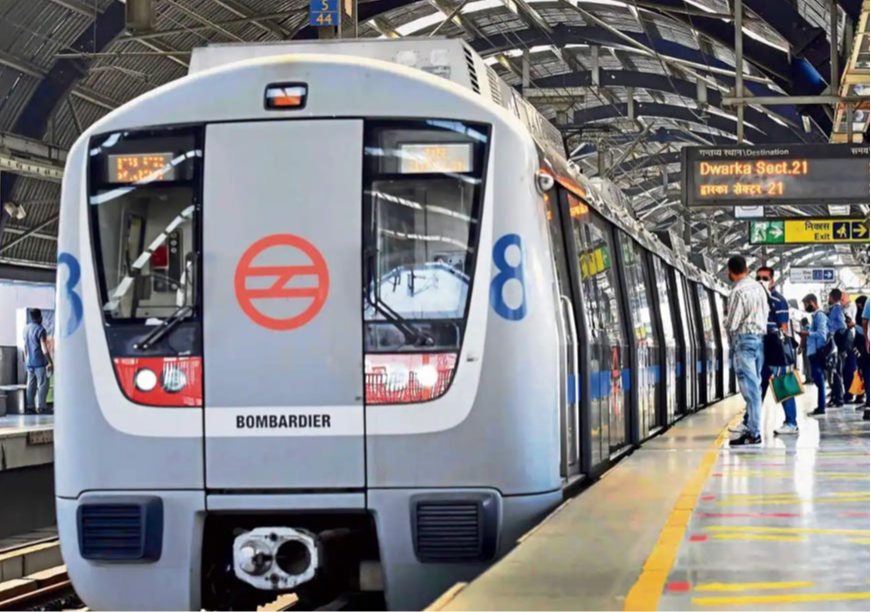-
CENTRES
Progammes & Centres
Location
The attainment of sustainable urban public transportation in Indian cities will be crucial for its aspiration to rank among the top three economies

The rapid expansion of urban centres in India can be ascribed to the burgeoning industrial sector, heightened economic activities, and increased employment opportunities. According to the Census of India, metropolitan areas with a population exceeding one million increased from 35 in 2001 to 53 in 2011. This trend is set to continue, with the urban population of 282 million in 2011 projected to grow to 590 million by 2031.
Urbanisation has elevated travel demands and escalated the number of trips made in urban areas. Projections indicate that the per capita trip rate across all modes of transportation will increase from 0.8–1.55 to 1–2 by 2030. Nonetheless, this surge in urban travel can exacerbate adverse transport externalities, including traffic congestion, road accidents, suboptimal peak-hour travel experiences, overpopulation, and environmental degradation. The metropolitan cities of Delhi, Mumbai, Kolkata, and Chennai incur congestion costs of approximately US$14.7 billion annually. In 2022, States and Union Territories reported 461,312 road accidents, resulting in 168,491 deaths and 443,366 injuries, representing an 11.9 percent increase in road accidents, 9.4 percent in fatalities, and 15.3 percent increase in injuries over the previous year.
The peak hour travel speed within cities is projected to decline from 26–17 km per hour to 8–6 km per hour. Growing traffic congestion has also worsened air quality in cities.
Moreover, the peak hour travel speed within cities is projected to decline from 26–17 km per hour to 8–6 km per hour. Growing traffic congestion has also worsened air quality in cities. For example, in 2022, the air quality of Delhi, Kolkata, and Mumbai was categorised as Hazardous, Very Unhealthy, and Unhealthy, with Air Quality Index (AQI) values of 304, 233, and 158, respectively.
Addressing these challenges necessitates strategic planning for sustainable Mass Rapid Transit Systems (MRTS). Responding to this imperative, cities have invested or intend to invest in rail-based public transport systems, prioritising them over bus-based alternatives.
Public transport became a central focus area for several Indian metropolitan cities following the implementation of the National Urban Transport Policy in 2005. Subsequently, the 12th Five-Year Plan, National Transport Development Policy Committee (NTDPC), Urban & Regional Development Plans Formulation & Implementation Guidelines–2017 (URDPFI), and Guidelines & Toolkits for Urban Transport Development developed by the Ministry of Housing and Urban Affairs (MoHUA), prepared guiding principles for selecting suitable urban public transport modes.
Public transport became a central focus area for several Indian metropolitan cities following the implementation of the National Urban Transport Policy in 2005.
These guidelines consider peak hour peak direction traffic (PHPDT), population, density, and trip length. Additionally, they provide the threshold values associated with each criterion, serving as a basis for determining whether Bus Rapid Transit (BRT), Light Rail Transit (LRT), or Mono Rail is the most suitable for a given city.
Presently, 24 Indian cities have MRTS and 16 have a single type of rapid transit system comprising either metro rail or BRT. Only five cities host two or more rapid transit systems, including a combination of suburban rail, metro, and BRTS. Among rail-based transit systems, metro rail systems are currently operational in 16 cities, under construction in six cities, and at the evaluation stage in four cities. Twenty cities are conducting feasibility studies for Metro Lite, while three are concurrently exploring the feasibility of Metro Neo.
However, the data conveys that ridership is not commensurate with the carriage capacity of the operational metro rail systems in any Indian city. Metro rail systems have not achieved the ridership forecast in their Detailed Project Reports (DPR). Mumbai (Phase 1) has achieved 89 percent of its estimated ridership, while Chennai and Hyderabad have reached 35 percent and 26 percent, respectively. Furthermore, the remaining 13 cities have struggled to attain even 20 percent of the estimated ridership.
Conversely, an analysis of ridership data for bus-based transit systems done by the author in nine cities reveals substantial disparities, with most cities exhibiting higher bus commuter volumes than metro rail ridership. Passengers use public buses 0.9 to 19.7 times more in these cities than rail-based transit systems—despite all the cities having deficient bus fleet sizes.
Among rail-based transit systems, metro rail systems are currently operational in 16 cities, under construction in six cities, and at the evaluation stage in four cities.
Most Indian cities also do not comply with the MoHUA guidelines of a minimum fleet size of 40-60 buses per lakh population. The number of buses per lakh population varies across cities, ranging from six in Lucknow to a maximum of 45 in Bangalore, with all other cities falling within this spectrum.
The higher ridership of bus-based transit systems despite inadequate bus fleets and low ridership of metro rail systems underscores the over-emphasis of Indian cities on the construction of mega rail-based projects rather than enhancing or optimising the existing modes of transportation, particularly buses. This has caused a situation where all modes of public transport within the cities compete with each other instead of complementing one another, leading to an unintegrated, and unsustainable operation of all modes of public transportation.
How Indian cities achieve sustainable urban public transportation will be pivotal to its potential to be among the world’s top three economies. Several cities have jumped the gun to embrace metro rail as a panacea for their urban transport problems without focusing on enhancing the bus fleets and networks or evaluating the felt need for the much more expensive rail-based option.
It is not to say that metro rail systems are not needed. Many Tier 2 cities in the country are witnessing a population surge and will require metro rail—but only when their bus-based systems reach saturation. The lack of well-defined regulations about the timing and quantum of investments in the urban transport system without considering augmenting and streamlining existing modes has driven much smaller cities to commit unwarranted finances to unsuitable public transport options. Consequently, the operating agencies have incurred substantial losses.
The lack of well-defined regulations about the timing and quantum of investments in the urban transport system without considering augmenting and streamlining existing modes has driven much smaller cities to commit unwarranted finances to unsuitable public transport options.
Various guidelines have considered population, density, trip lengths, and peak hour peak direction traffic (PHPDT) criteria to help cities opt for the most optimum mode but ignored other pertinent parameters, including trip time and trip cost, which are directly linked to individual affordability and collectively provide insights into the city's income pattern, convenience and accessibility when recommending different transportation modes. Moreover, the guidelines primarily emanate from a technological perspective inherent in these diverse modes without analysing the quantum of investments needed. A city’s form and size are also critical in selecting the optimum mode.
The strategic planning of MRTS in Tier 2 and 3 cities necessitates a comprehensive approach, mainly through integration with the existing public transport infrastructure, notably the city bus system. This integration is crucial for optimising efficiency. In cities, where travel distances tend to be relatively short, a well-organised city bus system emerges as a cost-effective and expeditious alternative to constructing a metro rail system. The foremost priority lies in enhancing the city bus system, involving an augmentation of the fleet size and expanding its coverage area. Implementing high-capacity and capital-intensive rail-based MRTS must be considered only when the bus systems efficiently address demand and reach their threshold. Cities must accordingly go beyond the existing guidelines and focus on formulating knowledge-based policies and mechanisms to support the choice of MRTS technology in India.
Nandan Dawda is a Fellow with the Urban Studies Programme at the Observer Research Foundation
The views expressed above belong to the author(s). ORF research and analyses now available on Telegram! Click here to access our curated content — blogs, longforms and interviews.

Dr Nandan H Dawda is a Fellow with the Urban Studies programme at the Observer Research Foundation. He has a bachelor's degree in Civil Engineering and ...
Read More +